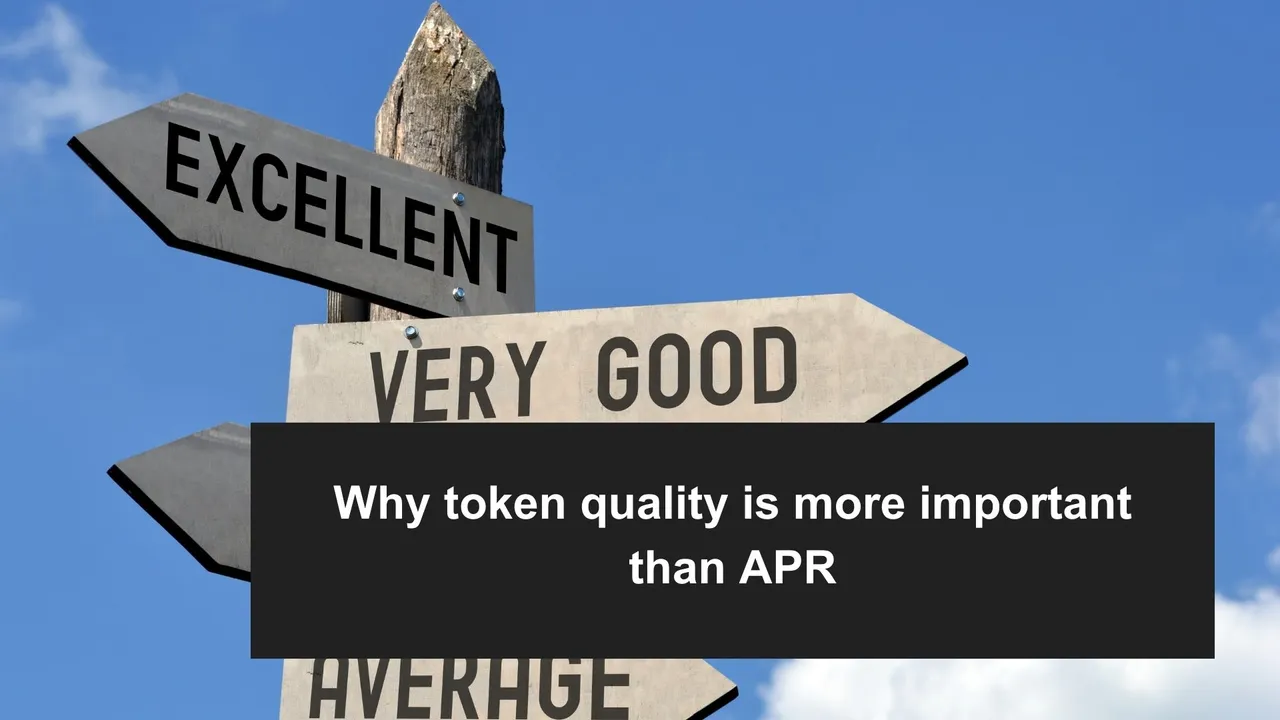
In the crypto world there are plenty of ways to get a return on your tokens. There are staking rewards, curation rewards, liquidity rewards and many other type of rewards. Often when deciding where to invest, people opt with the place where they get the highest APR.
The acronym "APR" stands for Annual Percentage Rate. Or the income that the investment would generate over a year
This approach of maximizing APR is however flawed because it matters very much in what type of token you get this APR paid.
What token do I receive for my investment
In many cases you get a token that has an inflationary distribution. Meaning that at the beginning of the minting, the APR can be very high. The reason here is simple, if few tokens are in circulation the percentage of the newly printed tokens in respect to the existing ones is high. Like that a high APR can be produced very easily. In most cases, such tokens aren't backed by any real value.
What happens in such a situation is that the value of these tokens are quickly diluted and a point in the future will happen where the APR is not interesting enough any more. The demand will shift and sooner of later the price of the token will drop. Often this drop will occur very quickly.
Let's do a little calculation:
Let's say you invest 100$ worth in a token X and you get a reward for holding this token that is 600% APR paid also in the token X. You buy this token X at 1$ and you get 100 tokens. With every newly minted token through the distribution, the APR on the token will actually decrease in a logarithmic way. However, the initial APR only defines how quickly the number of tokens are multiplied. For every 100 tokens, there will actually be 600 additional tokens at the end of one year. So your 100 tokens will become 700 tokens. From a financial point of view the initial 100$ were balanced by 100 tokens. At the end of the year, the 100$ will be balanced by 700 tokens. So each token would have a theoretical value of 0.14$. This is the case if there is no burn program and if there are no other ways to mint tokens. The influx of money into the token would naturally determine the value of the token. If more people buy the token than that sell the token, the value might be higher but this is not necessarily the case.
The distribution of minted tokens as rewards doesn't cost anything to a project. However, this means that no value is created for the people earning these tokens either. This is simply a way to dilute the existing tokens with inflation and it doesn't create any type of value.
What often happens in such cases is that people manage to game the process. The high APR draws in investors and if you buy and sell early enough, you can make a nice profit. This profit comes however at the cost of somebody else who makes a loss!
All this is maybe a bit simplified but if no external value comes into such tokens, you will probably never make any real profit with this type of reward tokens.
Low rewards paid in good tokens is much better than high reward in inflationary tokens
If however you get a reward in a non inflationary or a token with low inflation, then you make a real return. Therefore, you should always choose a reward that is paid in such a token even if the APR seems relatively low. If the reward is paid in a non inflationary token, it means that real value has gone into purchasing these rewards.
For the Liotes project we have the diesel pool LEN:LENM and today we have added rewards worth close to 200$ in the form of CTPSB tokens and SWAP.BTC. The APR of this pool is now over 30% APR.
Why have we chosen these tokens as reward tokens?
The CTPSB token is a tokenized Hive account and every token in circulation is backed by real Hive Power on the @ctpsb account. This token and the underlying account are actually growing in value through curation rewards and author rewards. This means that while sitting in the reward pool, each of these tokens is actually gaining value in the form of hive. Since our tokens are directly linked to hive, with a similar liquidity in the pool, the APR of the rewards should actually grow over time.
We have also added SWAP.BTC as reward. This is the wrapped version of BTC on hive-engine. BTC is per definition not an inflationary token. There will never be more than 21 million tokens in circulation and by adding such a token to the reward pool, we expect that our liquidity providers can actually get a better APR over time...
With @ph1102, I'm running the @liotes project.
Please consider supporting our Witness nodes: